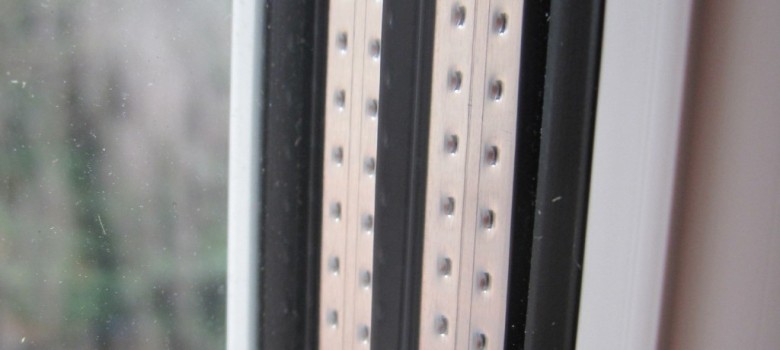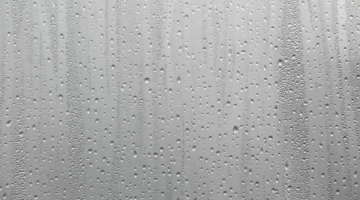
I have draughty wooden frame sash windows. What should I do?
There are lots of homes across the UK with draughty wooden sash windows, and we often get asked the best way to make them more energy efficient.
- Should you just draught proof or go through a full restoration process?
- Should you switch to standard double-glazing?
- What kind of sash double-glazing is available?
In this blog we take a look at your options and help you find out what is best for your property – beginning with the cheapest options first:
Draught proofing your sash windows
Draught proofing is something you can get done professionally whilst refurbishing the windows, or as a separate service, and it is also covered under the Green Deal. Draught proofing is the most cost-effective way of improving the efficiency of your windows, and is particularly effective on sash windows, as they are more prone to draughts than standard windows. It essentially involves creating an air tight seal around the frame of each of the sliding windows in the sash frame.
Draught proofing your windows can save you around £50 a year, so it is definitely worth considering. You can get a professional to draught proof your home, and this will cost between £200-400, but you can also DIY it if you feel up to the task, at a fraction of this cost. You can find out more about draught proofing sash windows here, and buy window draught proofing here.




Installing curtains and blinds
Thick curtains are also often overlooked as a means to help reduce heat loss from windows. If you have a pair of existing curtains on the sash window, see if you can install thermal curtain lining to the back of them to improve their thermal efficiency.
If you have no curtains at all, consider installing them since during the winter a thick pair of curtains can really help stop cold draughts.
The advantage of this option is that if you’re adept at DIY around the house you should be able to install the railing and curtains yourself. The disadvantage is that not everyone likes the sight of curtains and they may block some useful light, making the place look gloomier than it should do.
Installing secondary glazing to sash windows
There are two types of secondary glazing available on the market place today – fixed permanent glazing and temporary secondary glazing.
Fixed secondary glazing normally has panels that slide over one another, but cannot be removed from the window frame. Once frowned upon as a cheap, ugly addition to a home, modern secondary glazing can actually look fairly stylish, and vastly improve the thermal performance of the window.

Both secondary glazing options are significantly cheaper than new double glazing, and they allow you to keep the period features intact, since your home will look identical from the outside.
Permanent secondary glazing is also covered under the green deal, and you could be looking at a bill of around £300 per window compared to the cost of new double glazed sash at well over £1,300 per window. Temporary secondary glazing is cheaper than permanent secondary glazing too, with a typical install cost of around £110 per square meter.
Refurbishing sash windows
Sash windows are designed to be refurbished regularly, every decade or so. Over time, the frame and glass will become loose in the sash box, as a result of the movements of the house along with the expansion and contraction of the wood – this means that gaps for draughts are more likely to develop over the years. In addition, since most older sash windows are made from wood, they are more likely to rot over time, so regular painting is essential to help prevent this.
Refurbishing will of course cost far less (approximately £200 a window) than new windows, and could give your windows a new lease of life. The refurbishing process involves being dismantled, eased, adjusted, re-aligned, re-corded and re-assembled, and having a brush pile draught sealing system installed. As well as improving the efficiency of the windows it will also make them smoother to open and help cut out draughts. It is an ideal time to get professional draught proofing installed as well.
A typical cost for this service is around £200 per window, so it is not dirt cheap, but significantly less expensive than new windows! Sometimes it can save you just as much as new windows as well.
Double glazing sash windows
Replacing your sash windows with double glazing sash units is the last option and the most expensive.
To give you an idea of cost, wooden sash windows can cost around £1,300 each, whilst uPVC tend to be cheaper at about £700 per window. Sash double glazing windows are still much more expensive than getting traditional double glazing, which works out at about £300 per window on average.
As we have mentioned elsewhere, it is never cost-effective in terms of energy efficiency to switch to double glazing, even on an older property with large sash windows. The energy savings by replacing single glazed windows with double glazed are nowhere near as substantial as many window companies claim. Having said that, new windows can absolutely improve the appearance of the property and also make rooms feel far more comfortable in terms of temperature, so it is still something we would recommend if funds are available.
uPVC sash windows
uPVC sash windows are now available, and they are about a third cheaper than wooden sash equivalents. The advantage of uPVC of course is that less maintenance is required, and they generally come with lengthy guarantees, but their lifespan is likely to be less than well-maintained wooden sash windows. Unfortunately, uPVC also have the potential to devalue a period property, as people prefer the original wooden windows aesthetically.
Can I get a Government subsidy to cover sash window replacement ?
There are no national grants as such for new windows, but one option for those still keen on new double glazing is to speak to your local council’s domestic property services. Some councils have offered grants in the past for windows, so it is always worth a try.
Sash windows don’t have to be hard work!
As you can see, you don’t need to fret if you have sash windows; there are plenty of options available to you, with a range of costs. Think hard before completely changing your windows, as this is likely to be the most expensive option.
Installing new windows
Need your windows replaced? We have scoured the country for the best tradespeople, so that we can make sure we only recommend those we really trust.
If you would like us to find you a local installer, just fill in the form below and we will be in touch shortly!














No point replacing sash windows. I pay £1500 every few years to refurbish. Heavy curtains and lots of jumpers get me through winter. Saying all that, when its nice and sunny like last few weeks, the fact you can open them up as oppose to the terrible uPVC ones makes your home more oxygen rich.
I’ve heard that in addition to thick curtains, installing overhangs on the outside of the windows will be beneficial. This might be a dumb question. But I’m assuming that if all these tips are followed and it’s still not making a difference, then it’s time to replace the windows?
I overhauled my sash windows, including the bay, had to cut out sills, rebalance etc. It seemed very daunting at first, but once I did one I understood how they were built, I probably spent around £500 in materials, paint, rails, sills and new brushed beading, for a huge bay and double window sash. The result is draft free windows, no rattles, that is in keeping with the property. Next I will look at creating removable secondary glazing probably in hardwood frames, with brass hardware. The only other real option is to replace timber sash with new timber sash. I can absolutely guarantee plastic windows will not last as long nor can they be repaired. They might be more efficient but how long for that efficiency to recoup the initial installation cost, and what might pvc reduce in the selling price of a period property. PVC are a short term solution. Just be mindful that timber sash along with many other parts of a home require regular annual inspection and upkeep, irrespective if it is a period property or new build. Once you refurbish a sash window, you will have some admiration of the construction, to how the design lends itself for long term performance and maintenance.
Thanks for this matt – I think probably quite advanced DIY, but appreciate it can be done!
I have a period home and am a bit obsessive about original features. As nearly all of my windows have the original glass (bobbly and complete with air bubbles), I was very keen to try and refurbish them myself as I simply couldn’t afford to get a professional in to do the job. The first one was daunting but with the help of my Collins DIY manual, I ended up removing and completely refurbishing 2 large bay windows (8 panes per bay) plus 10 other windows! I did it over a summer and was thrilled with the result. When I was doing one of the windows I came across some newspaper which had been used as ‘packing’ between the frame and the wall. The newspaper was 60 years old ! Give it a go, it may be time consuming but really isn’t that difficult if you are a bit handy around the house! Having read all of the comments here, I’m glad I stuck to my guns and kept the original windows as they have lasted 110 years and are good for decades to come.
p.s. would I do anything different. I stripped and repainted, primer, undercoat gloss, pretty standard stuff. However next time I would look at a microporous paint or a traditional linseed based paint, that allows breathing on the exterior. Modern gloss paints are great but once they are breached, moisture can get in and then get trapped, allowing rotting from the inside.
We have a period house and although we do not suffer from draughty or rattling sashes we do suffer from condensation in winter, no amount of sealing or repairing of the original windows will resolve this, As this is caused by the warm air hitting the cold single glazed panes. Keeping the windows open is not a solution when it gets really cold, and curtains only keep the heat in at night when they are drawn. I agree PVC is not an option, but if we replace our original sash windows with double glazed wooden ones in keeping with the original style will this also devalue our property?
We had suffered from condensation for years so we had our windows renovated, we found this to be better but still had some condensation. We had slimeline double glazing installed by a friend of ours who specialised in it. Having this process done eliminated our problem without changing the overall look of our windows. We would strongly recommend having this done if you suffer from the same thing.
Choosing the proper type of window for your house is no easy feat. Double glazed sash windows offer just what you need.
I wish I could find someone who would refurbish my windows for just £200!! The cheapest quote I’ve had so far is £700 a window which includes painting from a one man band. Prices from sash restoration companies have been around the same price but without painting
Well I.ve just had a quote from a company to refurbished/drought proof and paint my 3 aspect sash bay window for £3663.675.